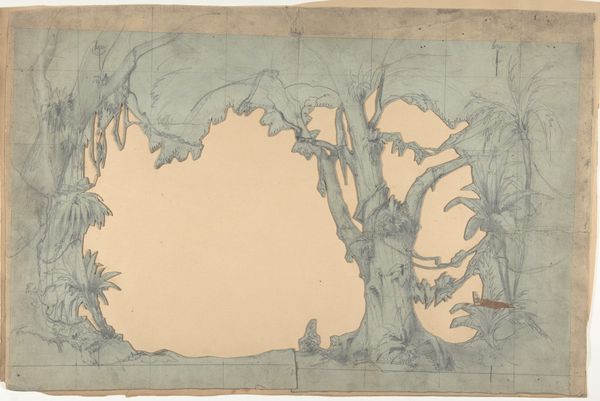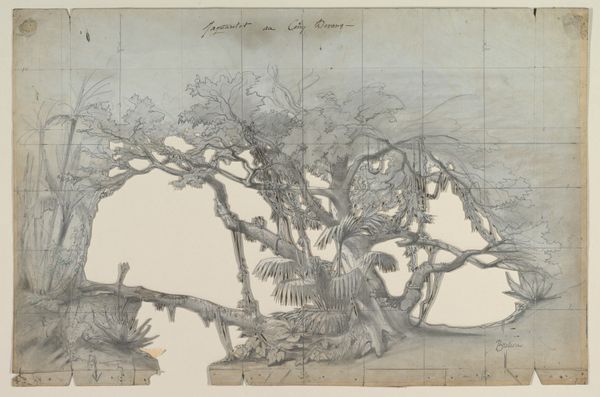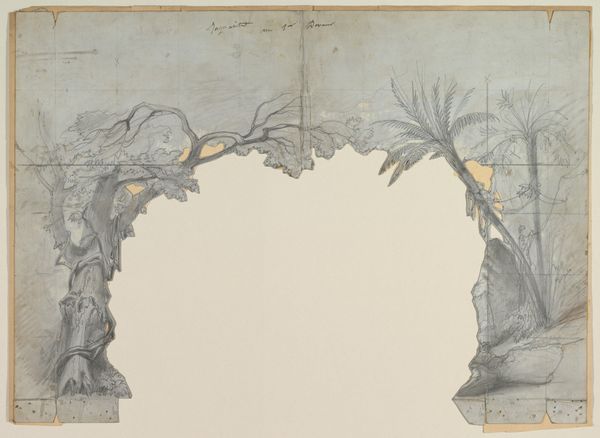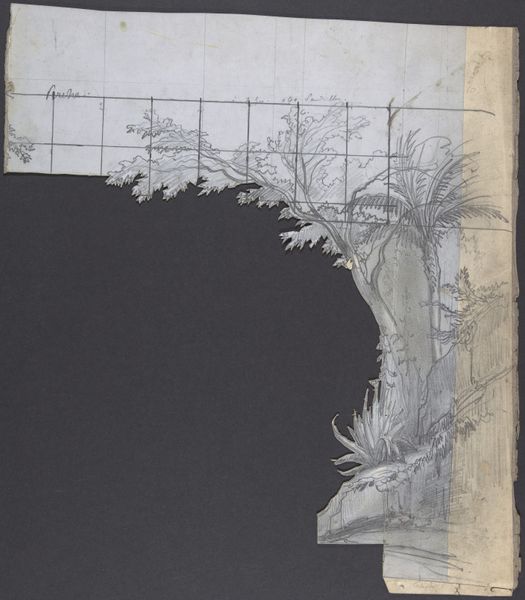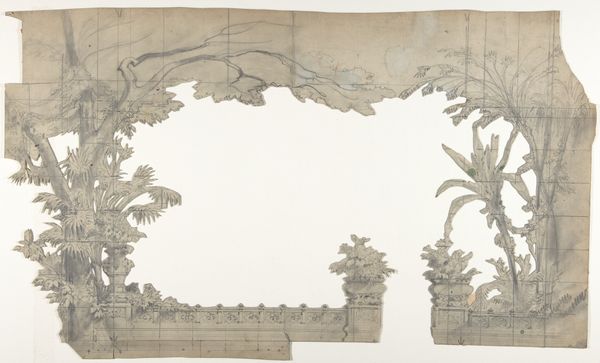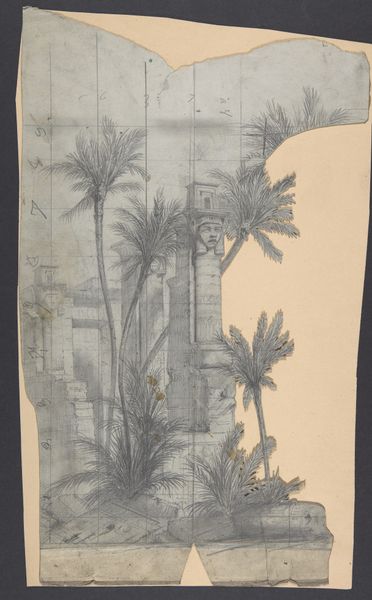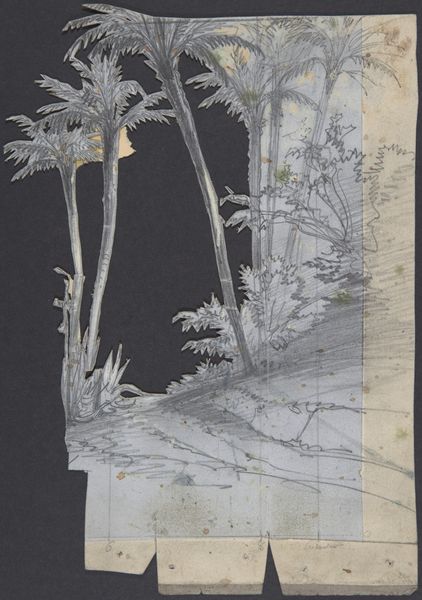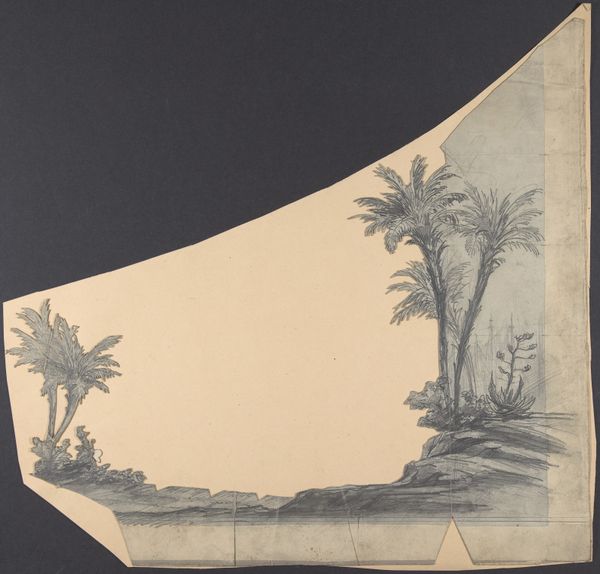
Design for a Stage Set at the Opéra, Paris 1830 - 1890
0:00
0:00
drawing, print, paper, pencil
#
drawing
# print
#
landscape
#
paper
#
pencil
#
history-painting
Dimensions: Irregular sheet: 9 1/4 x 10 1/8 in. (23.5 x 25.7 cm)
Copyright: Public Domain
Curator: This evocative stage design sketch for the Opéra in Paris, crafted between 1830 and 1890 by Eugène Cicéri, offers a window into the visual world of 19th-century theatre. It’s rendered in pencil on paper. Editor: The sketch has a very serene, almost melancholy quality, despite clearly depicting a vibrant, exotic stage. There is something very fragile and tentative about the rendering itself that gives it an almost haunted atmosphere. Curator: That melancholy you perceive might reflect the social currents of the time. The Parisian Opera was not merely a space of entertainment; it was deeply entwined with the politics and power dynamics of the era. Designs like this, showcasing idealized landscapes, served as a backdrop for narratives that reinforced societal norms. We must not forget that these fantastical escape routes often were at odds with reality for many. Editor: Indeed, it’s fascinating how the palm trees and other lush vegetation depicted serve as symbols of both escape and perhaps, a veiled critique. Exoticism was a potent force. But considering these stage designs, I wonder, did audiences read the palm tree as mere décor or as something that would conjure notions about an existing outside space? Was it cultural imposition or exchange? Curator: Exactly! It’s important to consider how images of nature intersected with colonial narratives. Often, these tropical settings provided an orientalized backdrop against which European dominance could be symbolically played out. The very choice of such a landscape speaks volumes about the societal lens. Editor: What interests me especially is how the rendering doesn't present the palm trees botanically precise. Instead, the fronds carry some familiar curves and lines that relate to classical European representations. The depicted "exoticism" is nothing other than an "europeanized exoticism." Curator: You are drawing my attention to hybrid cultural languages that come from the contact zone between cultures. Understanding these symbols and how they function allows us a more honest perspective for examining the values of past productions but also those which echo through current practices in performing arts. Editor: Analyzing these subtle visual cues provides keys to understanding not only the history of theatre but also its echoes within our own contemporary visual culture. Thank you! Curator: Indeed. It allows us to consider the legacy of such representations, how they influence our current perceptions, and how to create more equitable narratives today.
Comments
No comments
Be the first to comment and join the conversation on the ultimate creative platform.


